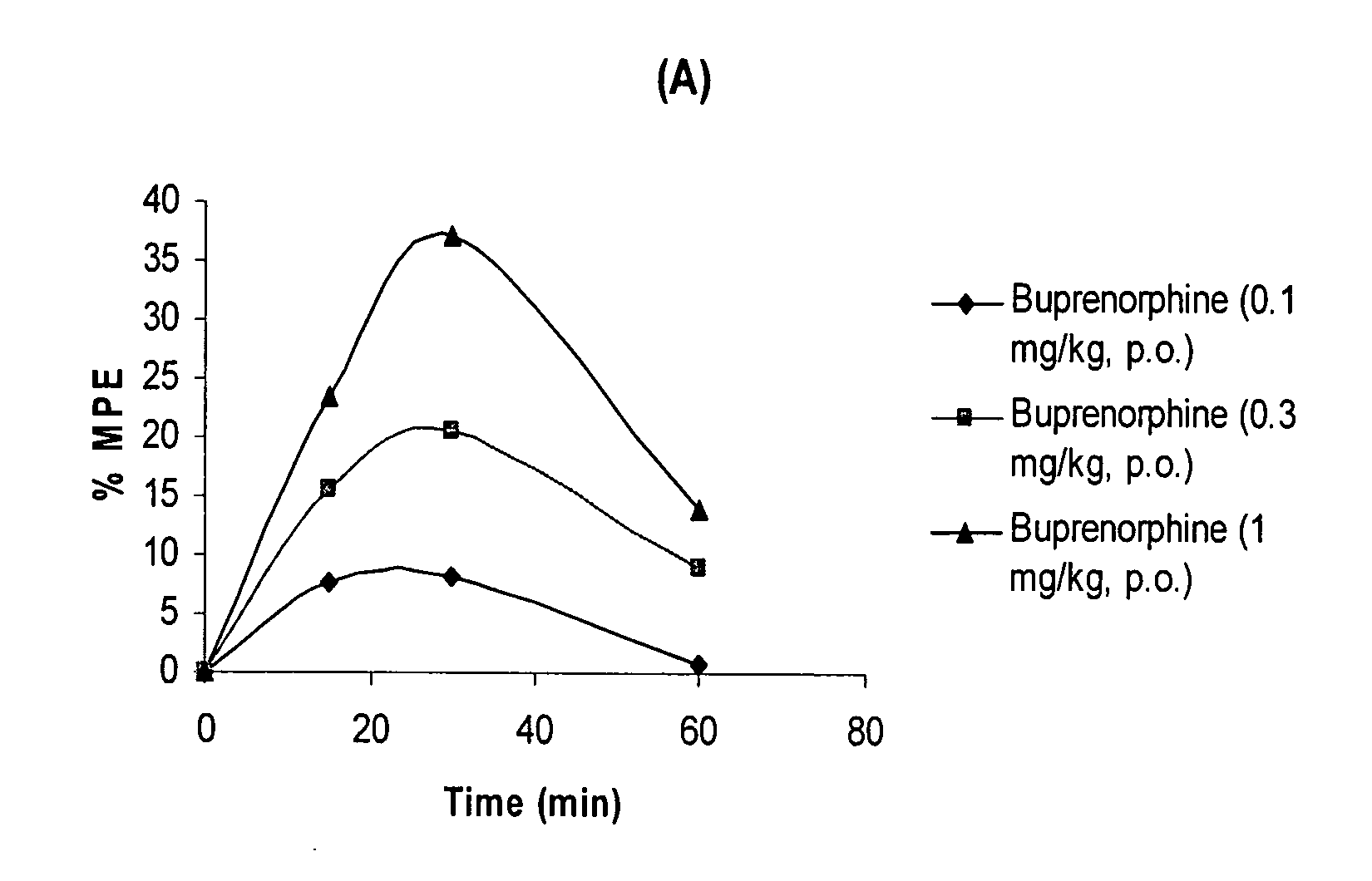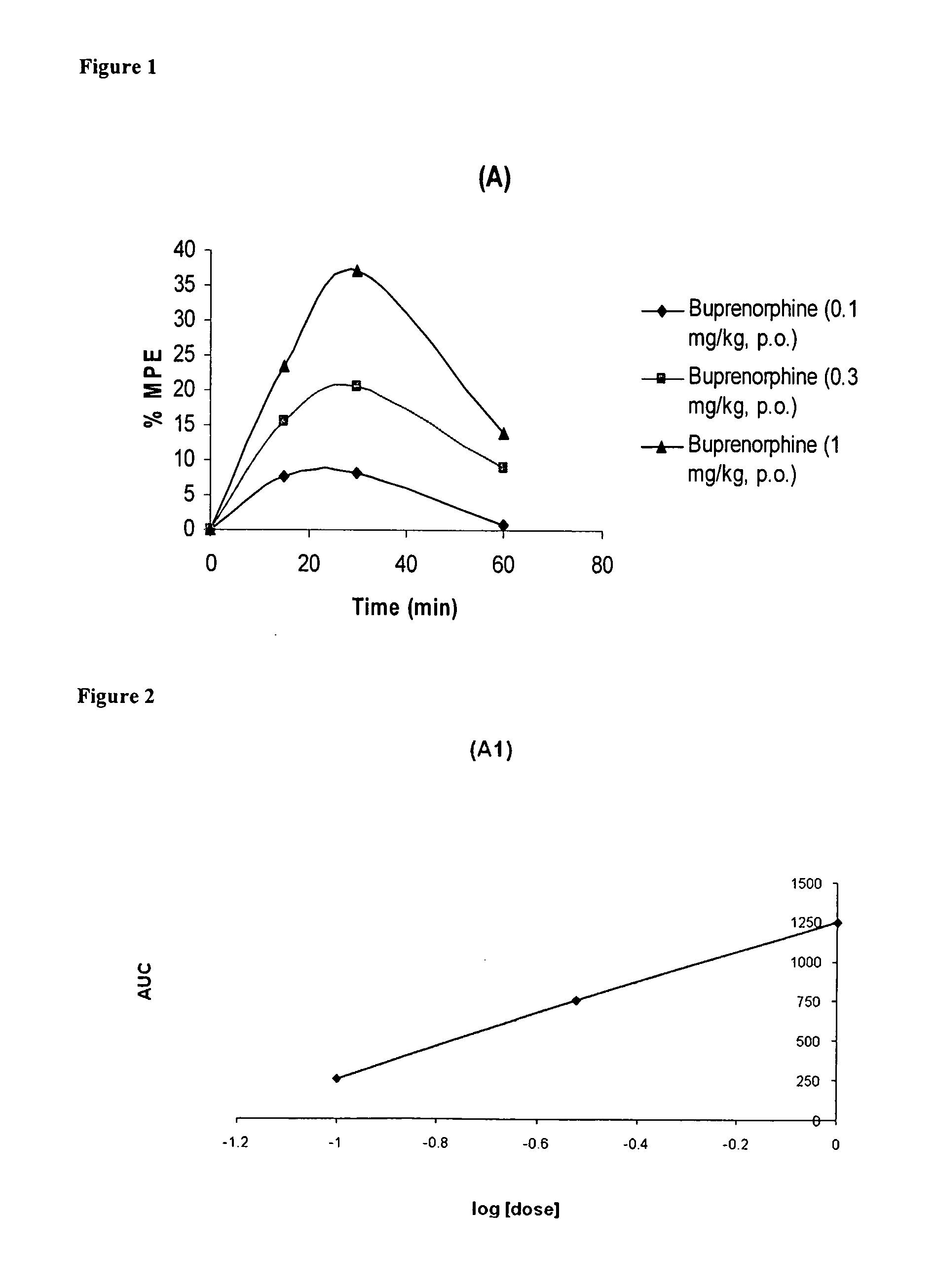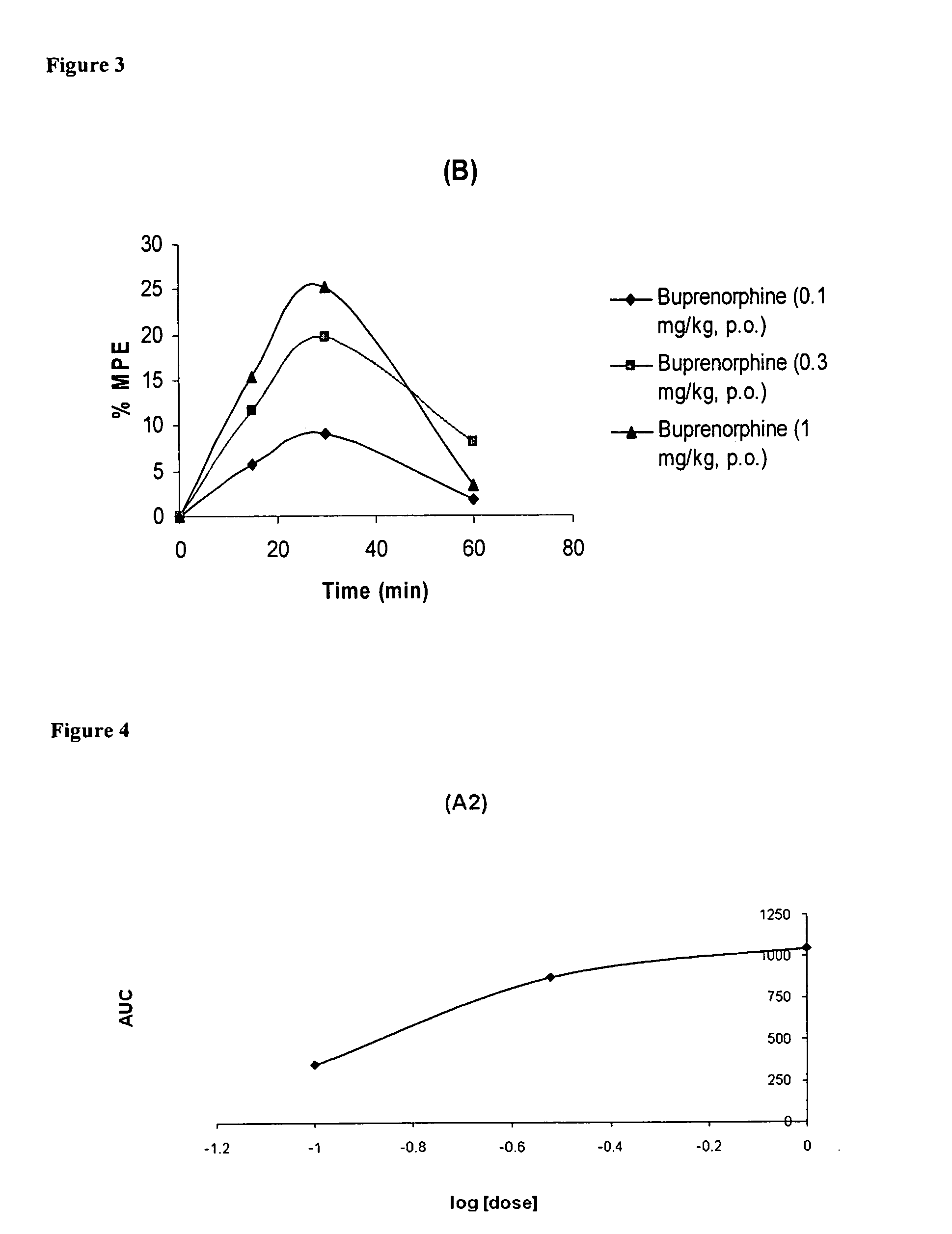Oral Pharmaceutical Compositions of Buprenorphine and Method of Use
a technology of oral pharmaceutical compositions and buprenorphine, which is applied in the direction of drug compositions, biocide, animal repellents, etc., can solve the problems of limiting the use of morphine in some patients, and affecting the safety of patients
- Summary
- Abstract
- Description
- Claims
- Application Information
AI Technical Summary
Benefits of technology
Problems solved by technology
Method used
Image
Examples
example 1
[0697]
Tablet Composition of Extended Release Buprenorphine HClIngredientsQty. / Unit1. Buprenorphine HCl20mg2. HPMC 2208, USP150mg3. Carnauba wax30mg4. HPMC 2910, USP15mg5. Magnesium Stearate2mg6. Stearic acid8mg7. Talc3mg
[0698]Place the ingredients 1, 2 and 3 in the granulator and mix for 15 minutes. Dissolve ingredient 4 in water (mix in hot water, then cool down) and spray into the fluidized mixture. Dry to approximately 5% moisture. Sequentially add ingredient 5, 6 and 7, with mixing steps between each addition. Compress using capsule shaped tooling.
example 2
[0699]
Tablet Composition of Extended Release Buprenorphine HClIngredientsQty. / Unit1. Buprenorphine HCl100mg2. HPMC 2208, USP250mg3. Carnauba wax50mg4. HPMC 2910, USP25mg5. Magnesium Stearate4mg6. Stearic acid14mg7. Talc5mg
[0700]Place the ingredients 1, 2 and 3 in the granulator and mix for 15 minutes. Dissolve ingredient 4 in water (mix in hot water, then cool down) and spray into the fluidized mixture. Dry to approximately 5% moisture. Sequentially add ingredient 5, 6 and 7, with mixing steps between each addition. Compress using capsule shaped tooling.
example 3
[0701]
Tablet Composition of Extended Release Buprenorphine HClIngredientsQty. / Unit1. Buprenorphine HCl500mg2. HPMC 2208, USP250mg3. Carnauba wax50mg4. HPMC 2910, USP25mg5. Magnesium Stearate4mg6. Stearic acid14mg7. Talc5mg
[0702]Place the ingredients 1, 2 and 3 in the granulator and mix for 15 minutes. Dissolve ingredient 4 in water (mix in hot water, then cool down) and spray into the fluidized mixture. Dry to approximately 5% moisture. Sequentially add ingredient 5, 6 and 7, with mixing steps between each addition. Compress using capsule shaped tooling.
PUM
 Login to View More
Login to View More Abstract
Description
Claims
Application Information
 Login to View More
Login to View More - R&D
- Intellectual Property
- Life Sciences
- Materials
- Tech Scout
- Unparalleled Data Quality
- Higher Quality Content
- 60% Fewer Hallucinations
Browse by: Latest US Patents, China's latest patents, Technical Efficacy Thesaurus, Application Domain, Technology Topic, Popular Technical Reports.
© 2025 PatSnap. All rights reserved.Legal|Privacy policy|Modern Slavery Act Transparency Statement|Sitemap|About US| Contact US: help@patsnap.com



